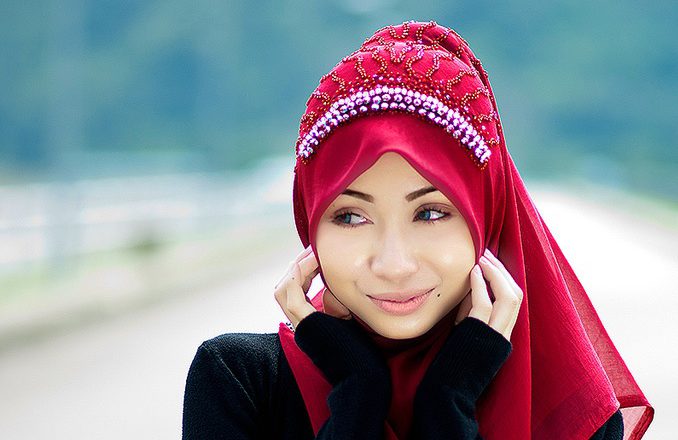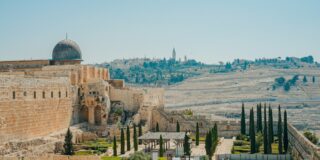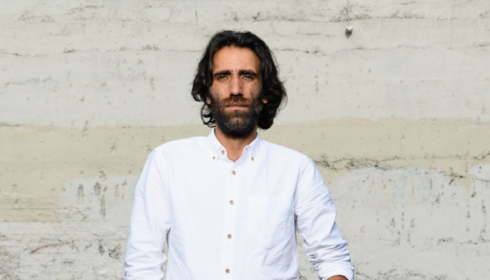
By Zoya Patel. This piece is part of our September focus on Women’s Rights. See all of this month’s articles here. This article originally appeared on Zoya’s blog, The Coconut Chronicles.
One topic I’ve always been a bit shy of writing about when it comes to cultural differences is the hijab.
The hijab is essentially a head scarf worn by Muslim women to cover their heads, as a sign of deference to their faith. That’s probably an overly simplified way of putting it, but it’s the most concise definition.
In reality, the hijab means many different things to different people, and in recent years has become more of a symbol of “oppression” than religious faith.
I’m going to keep this discussion limited to the hijab, and not even go into debates about the burqa (the full length veil, which covers a woman in almost entirety, only revealing her eyes). It is the hijab that I am interested in, because the hijab has had the most impact in my own life.
As someone who was born and raised a Muslim, and who regularly wore a hijab while praying, visiting a mosque, going to Sunday school, or on certain special occasions, it never occurred to me until my late teens that it could ever be considered oppressive.
The hijab, and to a more extreme level, the burqa are designed to take the onus off men when it comes to a sexualised gaze or harassment, and put it onto women.
To me, the hijab was just something that came hand-in-hand with our faith, something that women wore in much the same way as men wore the taqiyah (small round cap) while praying. Sure, I realised that the hijab was more cumbersome and worn more often than a taqiyah, but it just seemed normal to me. As anything would, I guess, when you’re a kid and you’ve never known any different.
My mother started wearing the hijab “full-time” when she was in her thirties. She decided that she was of an age where she wanted to further embrace her faith, and she went and bought a bunch of scarves in different colours, got a friend to teach her how best to wear them, and that was that.
I’m so used to mum wearing the hijab that I barely even notice it anymore, and I can vouch for her and say that she wasn’t forced in the slightest to wear it by my father, nor is she generally oppressed, nor is she stupid (a mistake which people commonly make when they see her in a hijab – the number of check-out people who have started talking to my mum in slow and clear English because they think she’s fresh of the boat is astounding).
But that doesn’t mean that the hijab itself isn’t a garment rooted in generally oppressive concepts. The whole point of the hijab is to cover women in order to protect their modesty. The hijab, and to a more extreme level, the burqa are designed to take the onus off men when it comes to a sexualised gaze or harassment, and put it onto women. Anyone remember Sheik al-Hilali’s “uncovered meat” comments?
So the conundrum for me is this – I can recognise that on an intellectual level, the hijab is a sexist construct that is designed to simultaneously objectify women, and protect them from becoming objects; but in my own experience the hijab has been nothing but a sign of deference to one’s faith, and has only ever been worn by choice.
Where does this leave me? I hate the idea of people looking at my mum and thinking she’s some poor, controlled woman with no agency, forced to wear the hijab by her tyrannical Muslim husband. But I also hate the thought of the millions of women who are forced to wear the hijab by their tyrannical husbands/brothers/fathers/cultures more broadly.
I didn’t even notice the yells of outrage until I was in the marketplace outside our hotel and suddenly there was a lot of hostility coming at me from all angles.
I remember being 11 and going for a family trip to Saudi Arabia. We were going to do what I call the “mini-pilgrimage”, or “Umrah” in Mecca and Medina. It was during Ramadan, and I had to fast like everyone else during the day (something my parents otherwise never made me do), because there was literally no food available during daylight hours. Not even water.
I wore the hijab like everyone else during the trip, but one day as we were leaving the hotel on the way to the mosque, I ran out without the hijab on. I was following a truly adorable stray cat, and I didn’t even notice the yells of outrage until I was in the marketplace outside our hotel and suddenly there was a lot of hostility coming at me from all angles.
Mum grabbed my hand and took me back to the hotel quick-smart, but I couldn’t shake the feeling of fear – what would have happened to me if I hadn’t been bundled away so quickly? I was 11 years old – surely no sexual gaze should have been directed at me anyway, right?
I never wear the hijab now, unless for some reason I accompany my family to a mosque. Although they’re aware of my atheism, I still think it’s important for me to respect their beliefs in places of worship.
I may never work out my exact feelings about the hijab, but one thing I do think is that the western approach to the hijab and burqa needs to be more nuanced. There is not a straight “oppressed/not-oppressed” way of looking at it.
Treating women as if they have no agency to make decisions about their wellbeing actually robs them of agency even more.
What do you think?
Zoya Patel is a student, writer and editor. She is Editor-In-Chief of Lip Magazine, Marketing Coordinator for the National Young Writers’ Festival 2012, and she writes the odd blog or two! You can see all of her work here.


